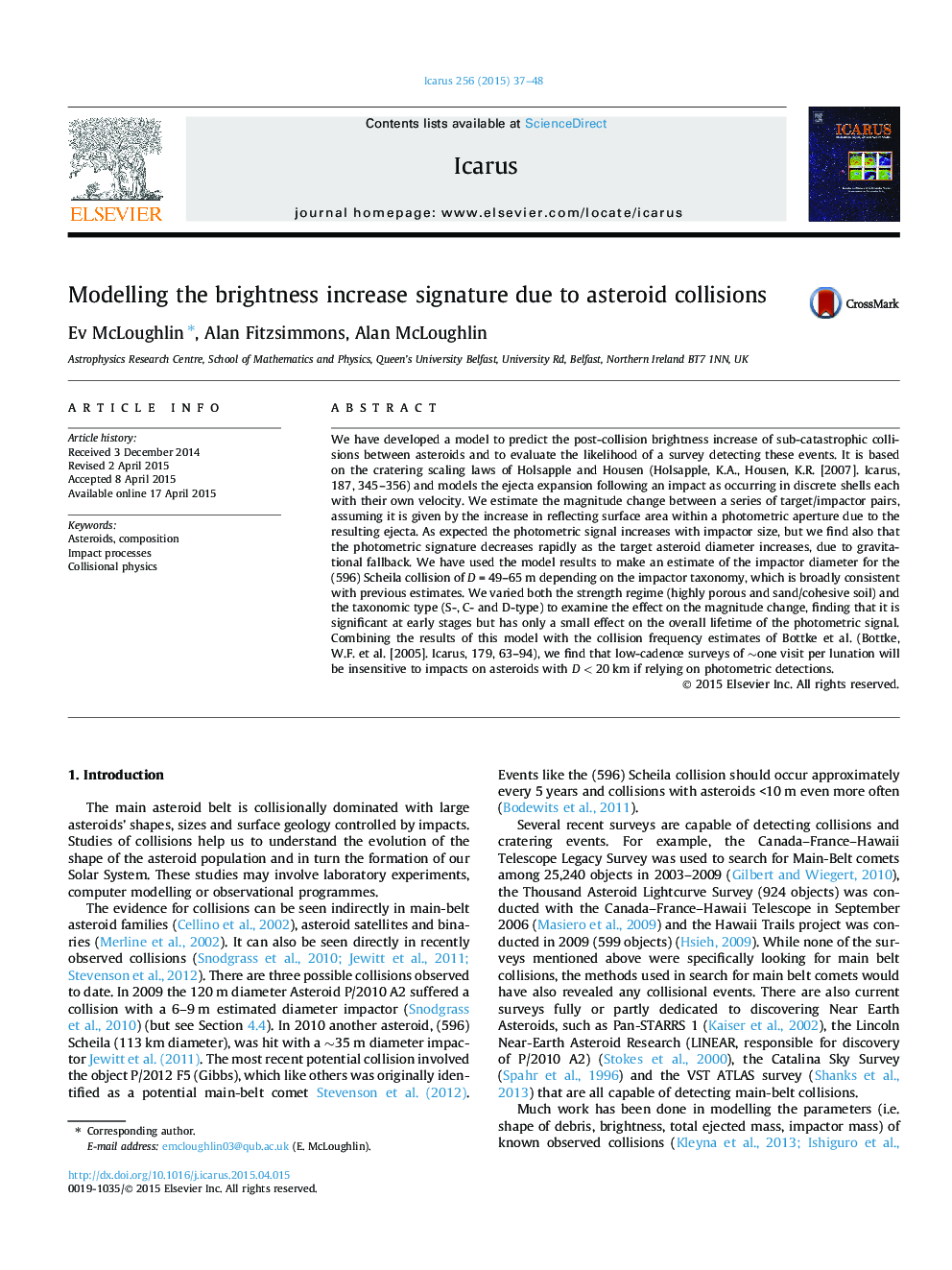| Article ID | Journal | Published Year | Pages | File Type |
|---|---|---|---|---|
| 1773034 | Icarus | 2015 | 12 Pages |
•We model the brightness increase after a sub-catastrophic asteroid collision.•We model impacts of asteroids of varying type and strength regime.•Automated detection and photometry software are not likely to detect impacts.•Detection possible via manual observation and comet comae algorithms.
We have developed a model to predict the post-collision brightness increase of sub-catastrophic collisions between asteroids and to evaluate the likelihood of a survey detecting these events. It is based on the cratering scaling laws of Holsapple and Housen (Holsapple, K.A., Housen, K.R. [2007]. Icarus, 187, 345–356) and models the ejecta expansion following an impact as occurring in discrete shells each with their own velocity. We estimate the magnitude change between a series of target/impactor pairs, assuming it is given by the increase in reflecting surface area within a photometric aperture due to the resulting ejecta. As expected the photometric signal increases with impactor size, but we find also that the photometric signature decreases rapidly as the target asteroid diameter increases, due to gravitational fallback. We have used the model results to make an estimate of the impactor diameter for the (596) Scheila collision of D = 49–65 m depending on the impactor taxonomy, which is broadly consistent with previous estimates. We varied both the strength regime (highly porous and sand/cohesive soil) and the taxonomic type (S-, C- and D-type) to examine the effect on the magnitude change, finding that it is significant at early stages but has only a small effect on the overall lifetime of the photometric signal. Combining the results of this model with the collision frequency estimates of Bottke et al. (Bottke, W.F. et al. [2005]. Icarus, 179, 63–94), we find that low-cadence surveys of ∼one visit per lunation will be insensitive to impacts on asteroids with D<20D<20 km if relying on photometric detections.
